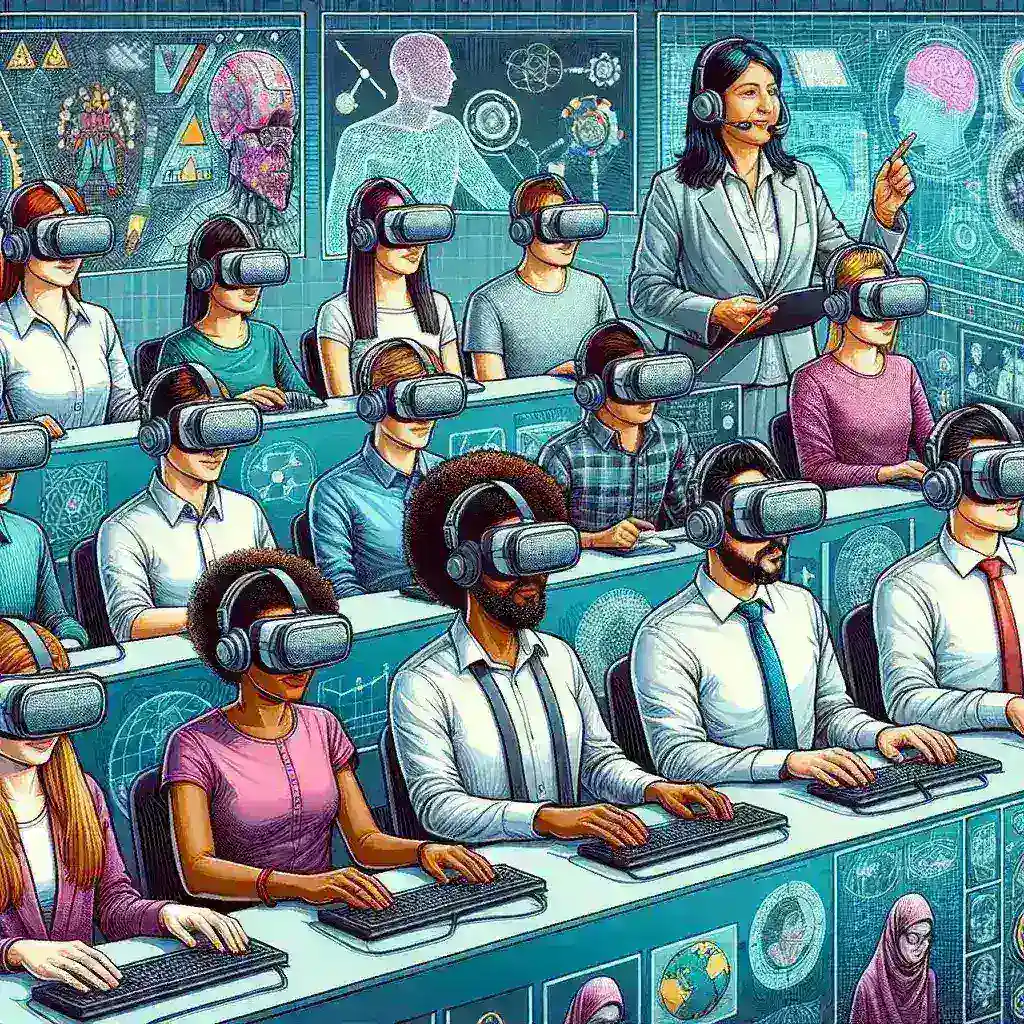Introduction
In recent years, the realm of education has undergone a radical transformation driven by technological advancements. Among these innovations, virtual reality (VR) classrooms are emerging as a prominent feature in higher education institutions. As colleges and universities strive to enhance student engagement and learning outcomes, the integration of VR technology is poised to become the new standard.
The Evolution of Virtual Reality in Education
Virtual reality is not a new concept; its roots can be traced back to the 1960s with the invention of the Sensorama. However, it wasn’t until the 21st century that VR technology began to gain traction in various fields, including education. The proliferation of affordable VR headsets and software has made it feasible for educational institutions to incorporate this technology into their curricula.
Historical Context
Initially, VR was used mainly in specialized fields such as medicine and engineering for training simulations. However, as the technology evolved and became more accessible, educators began to explore its potential for enhancing learning experiences across disciplines.
The Benefits of Virtual Reality Classrooms
Implementing VR in classrooms offers numerous advantages:
- Enhanced Engagement: VR immerses students in a virtual environment, capturing their attention and fostering a deeper connection with the subject matter.
- Real-World Simulations: Students can engage in realistic simulations that would be impossible or impractical in the real world, such as virtual field trips to historical sites or simulated science labs.
- Accessibility: VR can bridge geographical and physical barriers, allowing remote students to participate in immersive learning experiences without the need for travel.
- Personalized Learning: In a VR classroom, students can learn at their own pace, revisiting complex concepts through interactive experiences.
- Collaboration Opportunities: VR enables collaborative projects where students can work together in the same virtual space, regardless of their physical locations.
Challenges of Implementing VR in Higher Education
Despite its many benefits, the integration of virtual reality into higher education is not without challenges:
- Cost: The initial investment for VR technology, including hardware and software, can be significant.
- Training for Educators: Faculty members may require additional training to effectively incorporate VR into their teaching strategies.
- Technical Issues: Institutions must address potential technical difficulties and ensure that the necessary infrastructure is in place.
Future Predictions: The Expansion of VR Classrooms
As technology continues to advance, the future of VR in education looks promising. Experts predict that:
- By 2025, more than 40% of higher education institutions will adopt VR technology in some form.
- As VR content becomes more diverse and accessible, students will have a wider array of immersive learning experiences tailored to their specific fields of study.
- The growing popularity of remote learning will further accelerate the use of VR, allowing institutions to reach a global audience.
Real-World Examples
Several institutions are already embracing VR technology:
- Stanford University: Stanford has developed VR simulations for medical students, allowing them to practice surgical techniques in a safe and controlled environment.
- University of Illinois: This university has implemented VR technology in its architecture program, enabling students to visualize their designs in a 3D space.
- Arizona State University: ASU is exploring the use of VR for social sciences, helping students understand complex social dynamics through immersive scenarios.
A Step-by-Step Guide to Implementing VR in Higher Education
For institutions looking to incorporate VR into their educational offerings, consider the following steps:
- Assess Needs: Identify the specific needs and goals of the institution and its students.
- Research VR Solutions: Explore available VR technologies and software that align with the institution’s goals.
- Invest in Infrastructure: Ensure that the necessary hardware and software are in place to support VR experiences.
- Train Educators: Provide professional development for faculty to equip them with the skills needed to utilize VR effectively.
- Pilot Programs: Implement pilot programs in select courses to gauge effectiveness and gather feedback.
- Evaluate and Adapt: Continuously assess the impact of VR on student learning outcomes and adapt strategies as needed.
Conclusion
The rise of virtual reality classrooms marks a significant shift in the landscape of higher education. As institutions increasingly recognize the potential of VR to transform learning experiences, it is likely that this technology will become a standard component of academic curricula. By embracing VR, educators can cultivate an engaging, immersive, and personalized learning environment that prepares students for the challenges of the future.
Final Thoughts
As we look ahead, the integration of virtual reality into higher education seems inevitable. Institutions that invest in this technology will not only enhance their educational offerings but also provide students with the skills and experiences necessary to thrive in a rapidly evolving world. The future of learning is here, and it is virtual.

